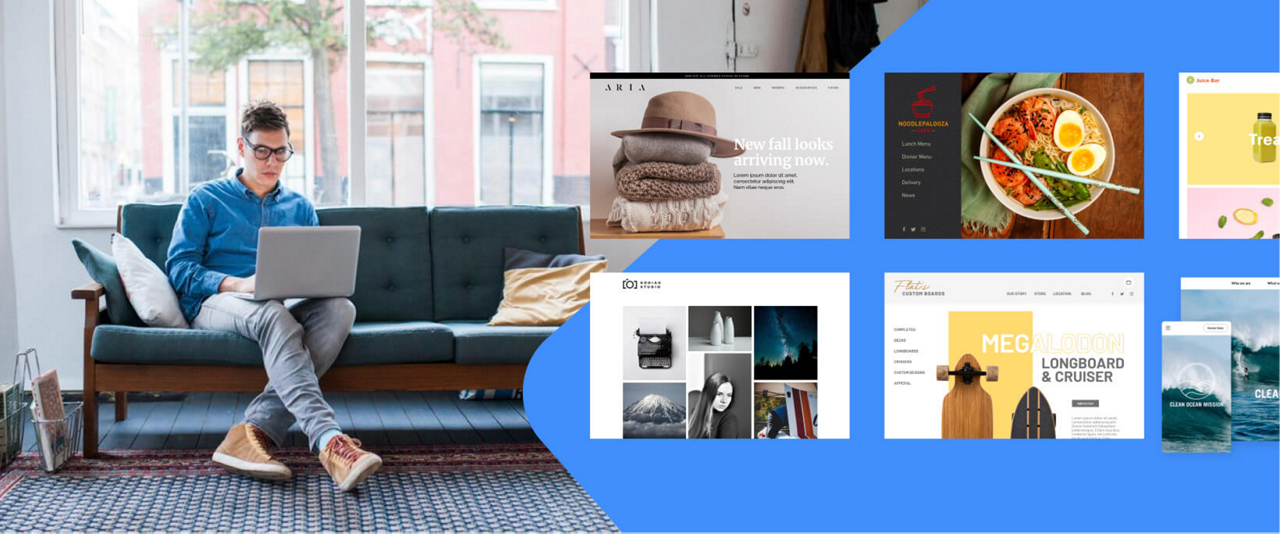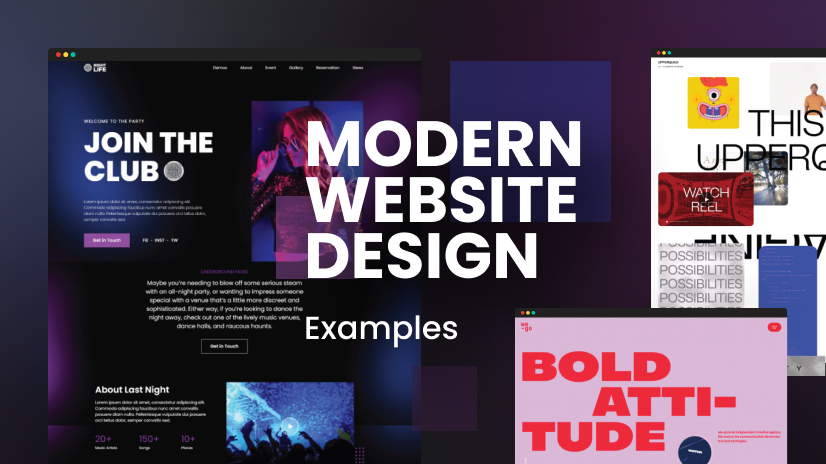Vital Concepts of Website Layout: Producing User-Friendly Experiences
In the realm of internet site design, the production of straightforward experiences is not just a visual quest yet an essential need. Necessary concepts such as user-centered design, user-friendly navigation, and accessibility work as the foundation of effective electronic platforms. By concentrating on individual requirements and choices, developers can foster interaction and fulfillment, yet the effects of these concepts extend beyond simple functionality. Understanding how they link can substantially impact a site's general performance and success, triggering a better examination of their individual functions and collective impact on user experience.

Relevance of User-Centered Design
Prioritizing user-centered layout is important for producing efficient websites that fulfill the demands of their target market. This strategy places the individual at the center of the design process, guaranteeing that the web site not only operates well however additionally resonates with customers on a personal degree. By comprehending the customers' habits, objectives, and preferences, designers can craft experiences that foster interaction and fulfillment.

Furthermore, taking on a user-centered layout approach can lead to improved availability and inclusivity, satisfying a varied audience. By thinking about different individual demographics, such as age, technical proficiency, and social histories, designers can produce web sites that rate and practical for all.
Inevitably, focusing on user-centered layout not only enhances individual experience yet can likewise drive vital service results, such as increased conversion prices and consumer commitment. In today's affordable electronic landscape, understanding and prioritizing user demands is a crucial success aspect.
Instinctive Navigation Frameworks
Efficient website navigating is frequently an essential consider improving customer experience. User-friendly navigation structures make it possible for users to locate information promptly and effectively, minimizing stress and increasing interaction. A well-organized navigation menu must be simple, logical, and constant across all web pages. This enables individuals to expect where they can find details web content, therefore promoting a smooth surfing experience.
To create user-friendly navigation, designers need to focus on quality. Tags ought to be familiar and descriptive to users, staying clear of jargon or ambiguous terms. A hierarchical framework, with primary classifications bring about subcategories, can additionally aid individuals in understanding the connection in between various sections of the website.
Additionally, integrating visual signs such as breadcrumbs can lead customers through their navigating course, enabling them to quickly backtrack if required. The addition of a search bar also improves navigability, providing customers direct accessibility to web content without needing to browse with numerous layers.
Receptive and Flexible Formats
In today's digital landscape, guaranteeing that sites operate perfectly across different tools is vital for user complete satisfaction - Website Design. Adaptive and responsive layouts are two key techniques that enable this performance, accommodating the diverse variety of display sizes and resolutions that users might encounter
Responsive designs employ liquid grids and flexible photos, allowing the internet site to automatically readjust its aspects based on the screen measurements. This approach offers a regular experience, where material reflows dynamically to fit the viewport, which is especially beneficial for mobile individuals. By utilizing CSS media questions, designers can produce breakpoints that optimize the layout for various tools without the need for separate designs.
Adaptive formats, on the various other hand, make use of predefined formats for particular screen sizes. When an individual accesses the website, the server discovers the gadget and serves the appropriate design, making certain an optimized experience for varying resolutions. This can result in faster filling times and boosted performance, as each format is customized to the tool's capacities.
Both adaptive and responsive designs are essential for improving individual involvement and fulfillment, inevitably contributing to the internet site's overall effectiveness in fulfilling its objectives.
Consistent Visual Power Structure
Developing a consistent aesthetic hierarchy is pivotal for guiding individuals via a website's web content. This principle ensures that information is presented in a fashion that is both user-friendly and appealing, allowing individuals to easily comprehend the product and browse. A distinct pecking order utilizes various style aspects, such as size, contrast, shade, and spacing, to develop a clear distinction in between different my latest blog post kinds of content.

Furthermore, consistent application of these visual cues throughout the site fosters familiarity and trust fund. Individuals can quickly learn to acknowledge patterns, making their interactions more efficient. Eventually, a solid aesthetic hierarchy not just enhances user experience yet additionally boosts general site use, motivating much deeper interaction and facilitating the desired actions on an internet site.
Accessibility for All Customers
Ease of access for all users is a basic aspect of website design that guarantees every person, despite their handicaps or abilities, can engage with and benefit from on-line material. Creating with accessibility in mind involves applying techniques that suit varied individual demands, such as those with aesthetic, auditory, electric motor, or cognitive problems.
One vital guideline is to comply with the Internet Material Access Guidelines (WCAG), which provide a framework for producing obtainable electronic experiences. This consists of making use of enough color comparison, offering message alternatives for images, and making certain that navigation is keyboard-friendly. Furthermore, using responsive design methods ensures that sites operate successfully throughout numerous gadgets and display dimensions, additionally improving access.
Another essential variable is using clear, succinct language that avoids lingo, making content comprehensible for all individuals. Engaging users with assistive modern technologies, such as display viewers, needs mindful focus to HTML semiotics and ARIA (Obtainable Abundant Web Applications) functions.
Ultimately, focusing click reference on ease of access not only fulfills lawful commitments yet likewise expands the audience reach, fostering inclusivity and improving individual complete satisfaction. A commitment to accessibility shows a commitment to developing equitable digital environments for all individuals.
Conclusion
Finally, the essential concepts of site layout-- user-centered style, user-friendly navigating, receptive formats, constant aesthetic power structure, and accessibility-- collectively add to the development of easy to use experiences. Website Design. By prioritizing individual needs and ensuring that all individuals can effectively involve with the site, designers enhance use and foster inclusivity. These principles not only enhance individual contentment yet likewise drive positive business outcomes, ultimately demonstrating the important relevance of thoughtful web site design in today's electronic landscape
These techniques supply invaluable insights into user assumptions and discomfort points, allowing designers to customize the site's features and content appropriately.Effective site navigating is commonly an important factor in enhancing customer experience.Developing a consistent visual power structure is crucial for directing users with a website's web content. Inevitably, a strong aesthetic power structure not just improves user experience yet likewise enhances find more overall website functionality, motivating much deeper involvement and facilitating the wanted actions on a website.
These concepts not just improve customer complete satisfaction yet also drive positive company results, ultimately showing the important significance of thoughtful website design in today's electronic landscape.